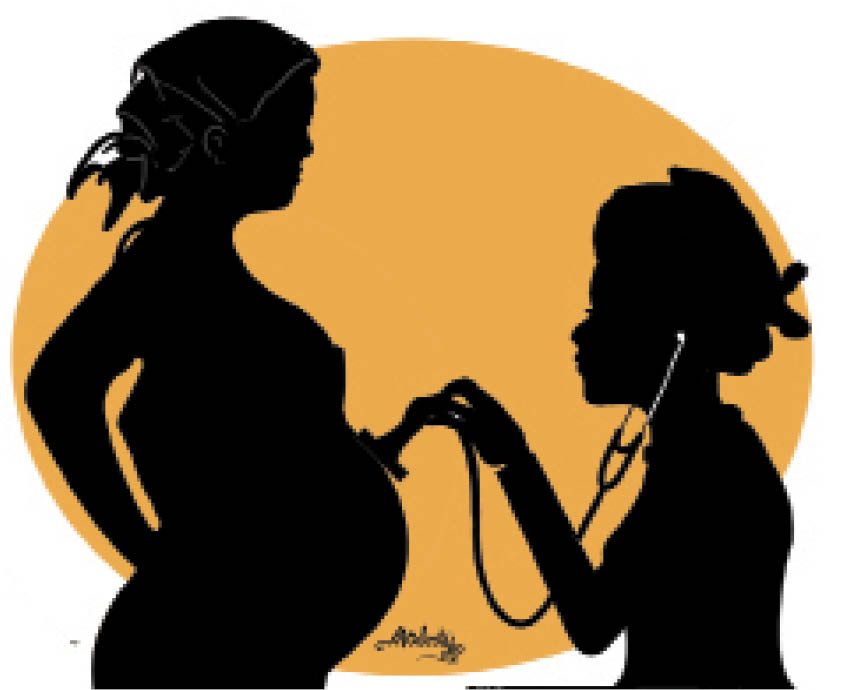The increasing global challenge of infertility has made many families seek solutions from Assisted Reproductive Technology (ART). During this procedure, one or more embryos are transferred. However, experts said there are health implications for transfer of multiple embryos.
Assisted Reproductive Technology (ART) is a medical procedure used to treat infertility. According to the United States Center for Disease Control (CDC), ART includes all fertility treatments in which either eggs or embryos are handled. “In general, ART procedures involve surgically removing eggs from a woman’s ovaries, combining them with sperm in the laboratory, and returning them to the woman’s body or donating them to another woman.”
ARTs include in vitro fertilisation, intracytoplasmic sperm injection (ICSI), cryopreservation of gametes or embryos, and/or the use of fertility medication. The most common complication of ART is multiple pregnancies which can be prevented or minimised by limiting the number of embryos that are transferred into the woman’s body.
The story of Mrs Amaka Emmanuel, who delivered a set of sextuplets at the University of Abuja Teaching Hospital (UATH), Gwagwalada, brought so much excitement being the first of its kind at the facility. The highest ever recorded before this was a set of quadruplets.
Although seven embryos were planted in her through in vitro fertilisation (IVF) at a private hospital, one of the babies died in the womb before her referral to UATH where the babies were delivered through caesarean session.
However, only one of the babies is left due to complications arising for both the mothers and their babies.
Like Mrs Emmanuel, a number of women have gone through IVF transfer of multiple embryos without successful results in the pregnancy and after delivery.
The current fertility rate for Nigeria in 2020 is 5.281 births per woman, a 1.27% decline from 2019. The fertility rate for Nigeria in 2019 was 5.349 births per woman, a 1.26% decline from 2018 while the rate for 2018 was 5.417 births per woman, a 1.19% decline from 2017.
IVF is done to help a woman become pregnant. It is used to treat many causes of infertility, including: Advanced age of the woman (advanced maternal age), and damaged or blocked fallopian tubes.
A European study revealed that transferring more than two embryos during an IVF cycle is a dangerous practice that does not improve a woman’s chances of delivering a baby.
“The conclusion that there is no medical justification for transferring three or more embryos, even in women over the age of 40, has major implications in the U.S., where 1 in 3 IVF procedures involves the transfer of more than two embryos.”
The Chief Consultant Obstetrician and Gynaecologist, UATH, Gwagwalada, Abuja, Dr Habibat Abdullahi, said it is not a common thing to have sextuplets, adding that any pregnancy that is three and above is called higher-order pregnancy because it’s not just twins.
She said such pregnancies are associated with higher levels of complication than twins because the more the babies, the more the level of complication the mother faces.
She said the complication of higher-order pregnancy is that of prematurity because the womb is just one and accommodating more babies at a time poses a higher risk.
What is expected of women with multiple pregnancy?
Dr Abdullahi said it is advisable that any woman who is carrying twin and above should register at a hospital that has facilities that can take care of both the mother and babies.
According to him, this will help for a better outcome because there are some measures that would be taken to prevent complications. These measures would be taken at the early stage so that the pregnancy can be prevented and also the mother, especially from pre-eclampsia. If pre-eclampsia does not occur, it would give the babies enough chance to grow.
Reason for increasing rate of multiple pregnancy
The expert said globally, Nigeria has the highest twinning rate and commoner among the Yoruba and narrowed down to Igbo Ora in Ibadan, Oyo State where the highest rate is recorded. So, globally, if you are a Nigerian, you are likely to have a multiple birth.
She said higher-order of pregnancy may occur spontaneously as a result of superovulation but the recent occurrences are not unconnected to ART.
“Many women now go for it because of the delay in childbirth. Some are pursuing their academics or other careers and when they are ready, they go for it making use of fertility drugs and also IVF where eggs are transferred into the mother,” She said.
The need for regulation
The Chief consultant also said, in this part of the world, there is no regulation to checkmate the number of eggs that could be transferred into a woman unlike in developed countries.
“In Nigeria in particular, it is like we don’t have regulation to the number of embryos that can be transferred but this is fast becoming a necessity.
“So, it’s becoming a kind of competition that some fertility centres now do multiple transfers of embryos in three, four, and more. They will say let’s transfer four, if two survive, fine, not minding the complications involved. They transfer so many embryos and that may result in higher risks in pregnancies,” she added.
Some complications associated with higher order of pregnancy
Dr Abdullahi said two embryos are enough during IVF and if the two stay, they would grow well and may not need to be born preterm or be incubated.
She said the complications associated with multiple pregnancy are numerous and could be grouped into maternal complications and foetal complications.
Maternal complications mean the complication of the mother while the foetal complications have to do with the baby.
According to her, from the beginning, maternal complications include excessive pregnancy symptoms such as vomiting more than normal as in the case of one or two embryos, and anaemic complication because there is an increasing demand for blood from the mother by the babies.
She said, “When a woman is carrying twins, she is at risk of pre-eclampsia and when the babies are more, the complication is higher and it leads to the babies being delivered preterm.
“The babies are also too small because they have to compete with space; their sizes couldn’t be like that of a single baby or twin and delivery has to be planned in time for the safety of the mother.”
She also said there is hypertension disorder in higher-order pregnancy which could lead to eclampsia, and if this is not managed in time, it could cause convulsion and it can short down the kidney and other complications may set in.
“There is also an increase in operating delivery (caesarean session). There is a high probability of the babies being small in sizes than they should for that gestational age babies because they are so compressed, they are not getting enough nutrients and space. The woman may bleed too much because the womb is so stretched beyond normal thereby making the womb not to contrast on time as it should. There is a risk of them coming out preterm because there is the elastic limit and once it reaches that limits, the babies need to be evacuated,” Dr Abdullahi added.
She said the complications of multiple pregnancies are so many and many mothers actually illustrate some of the complications.
Steps to take when carrying multiple babies
Dr Abdullahi said any woman carrying multiple pregnancy should book for antenatal care in a good facility that has personnel and equipment that can manage both mother and babies.
“We encourage them on taking adequate nutrition and must eat well. Adequate rest is necessary for such women so that they wouldn’t get weak. The woman can be placed on supplements that can help her build a good immune system and equip her blood to take care of the pregnancy.
“Malaria prevention drugs are also given as we encourage them to sleep under mosquito treated nets and so many other interventions. Regular antenatal is encouraged so that whatever comes up will be detected early and treated so that it doesn’t get out of hand,” she said.
She added that once they know that the woman is carrying multiple pregnancy, the delivery will be taken by at least a senior registrar as it is done in UATH.”Senior registrar is the step next to becoming a consultant. It will be written with a red pen that this woman must be handled by a senior registrar. Once you see that patient, you are on your feet and so many things will be put in place.”
Where is the best place to do IVF; government or private facilities?
The expert said the results are the same whether IVF is done at a private or public facility, adding that IVF is mostly done in private facilities because government has not really placed priority on it. She however said before opening such a facility, they must have the requisite training and experience.
“But once the pregnancy test is positive, we tell private facilities to refer to us and we do the antenatal from the beginning to the end.”

 Join Daily Trust WhatsApp Community For Quick Access To News and Happenings Around You.
Join Daily Trust WhatsApp Community For Quick Access To News and Happenings Around You.


